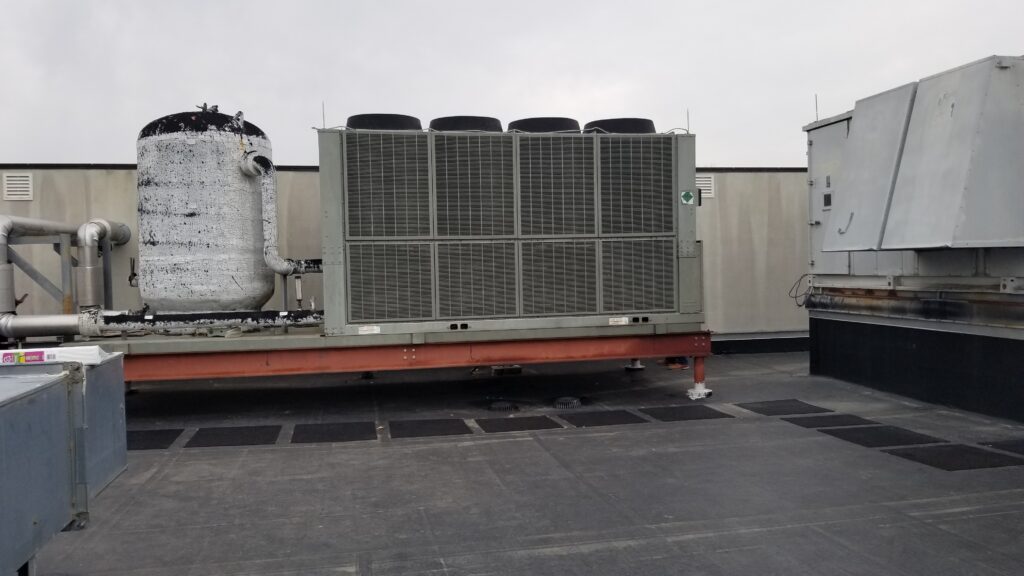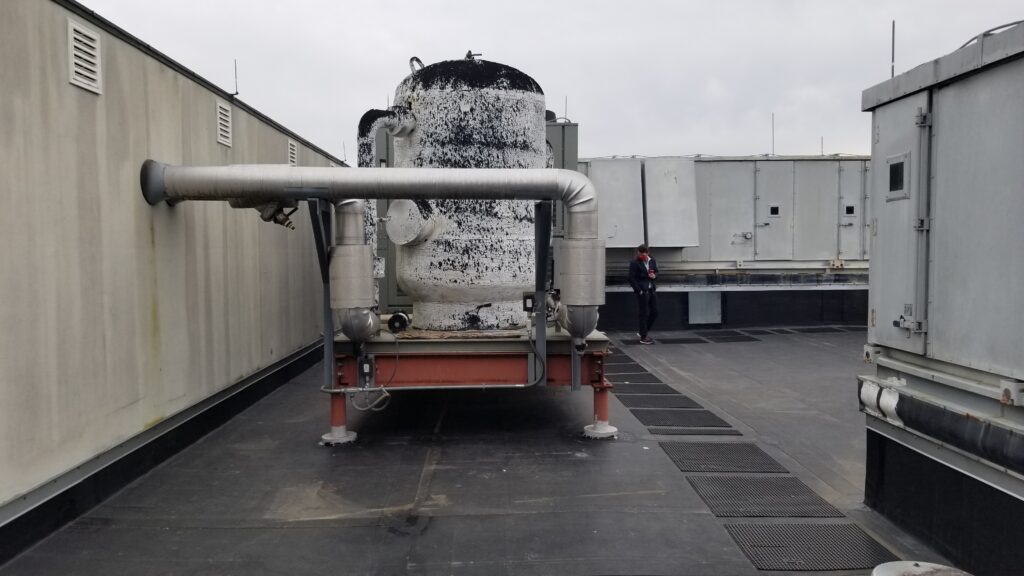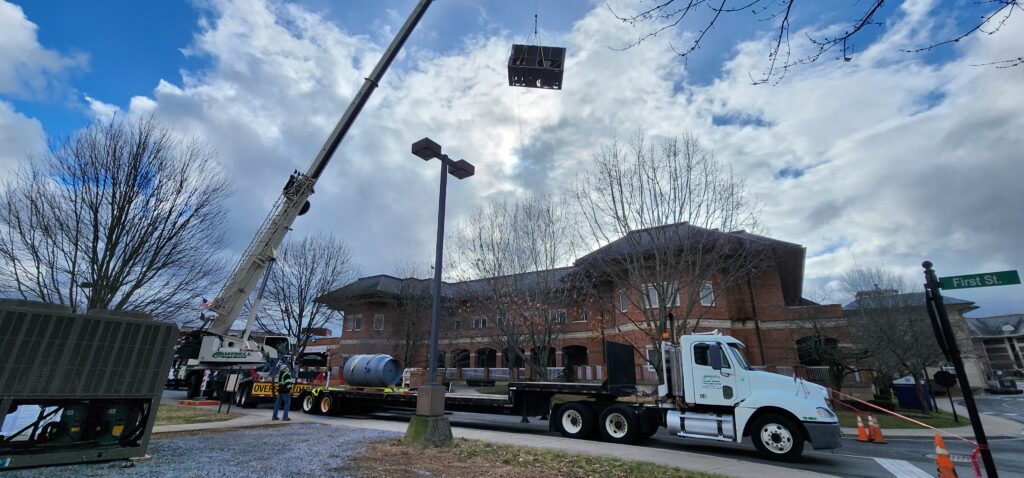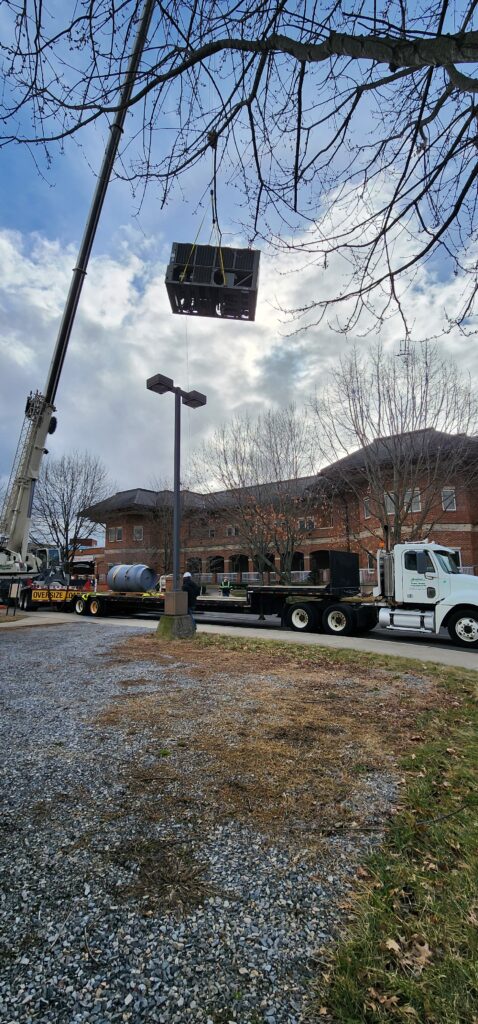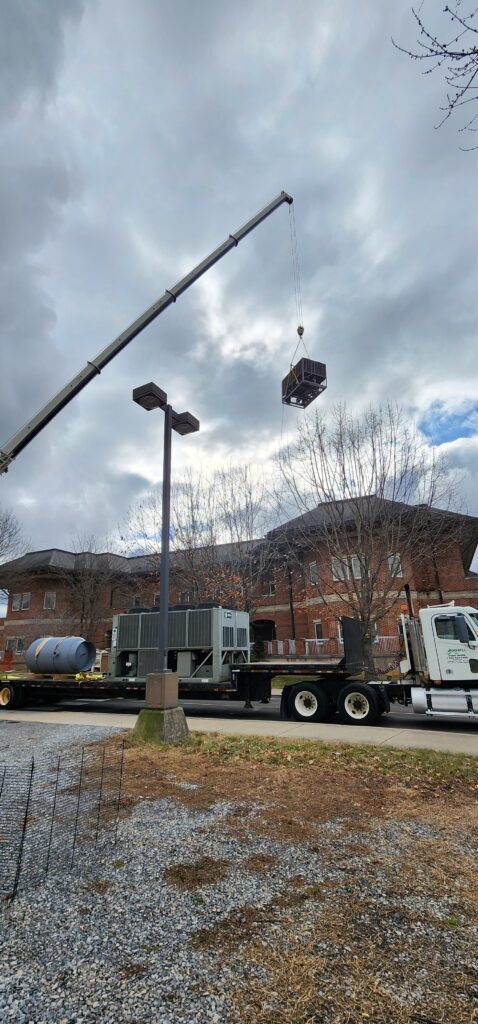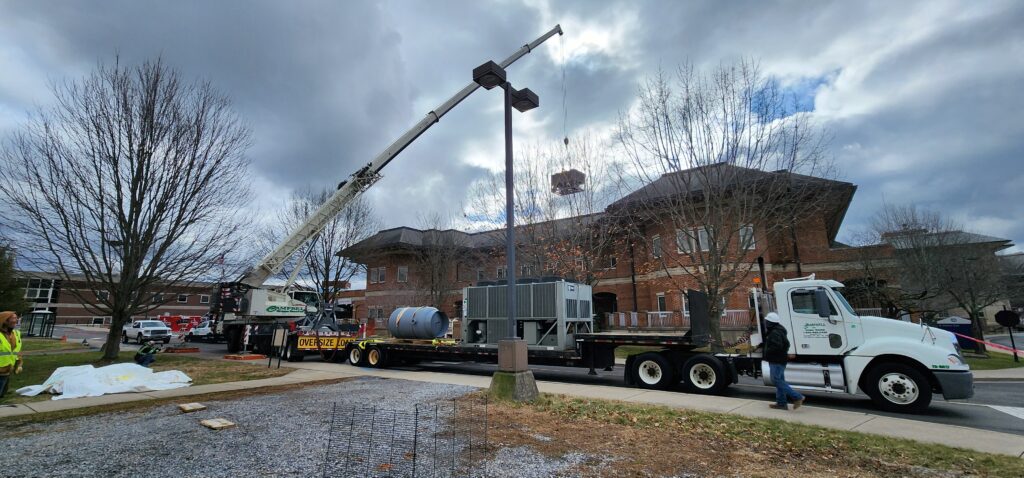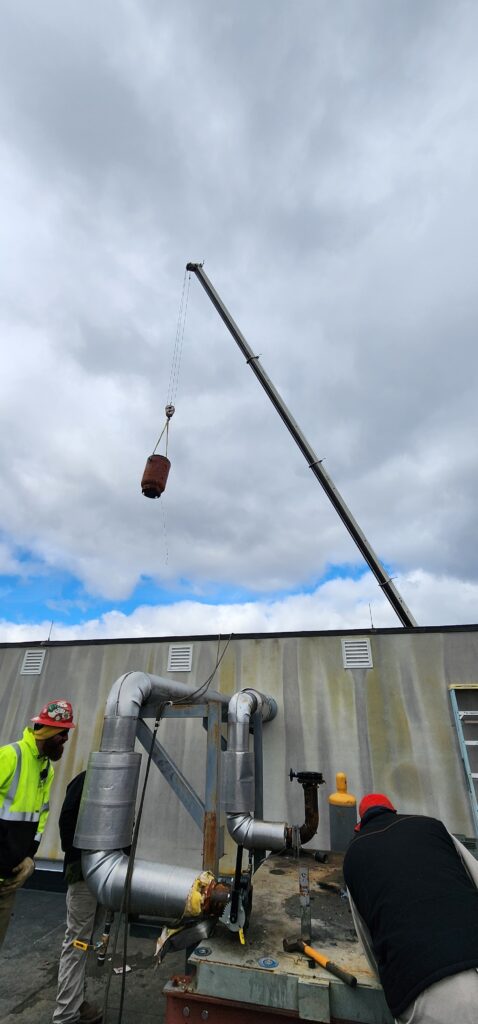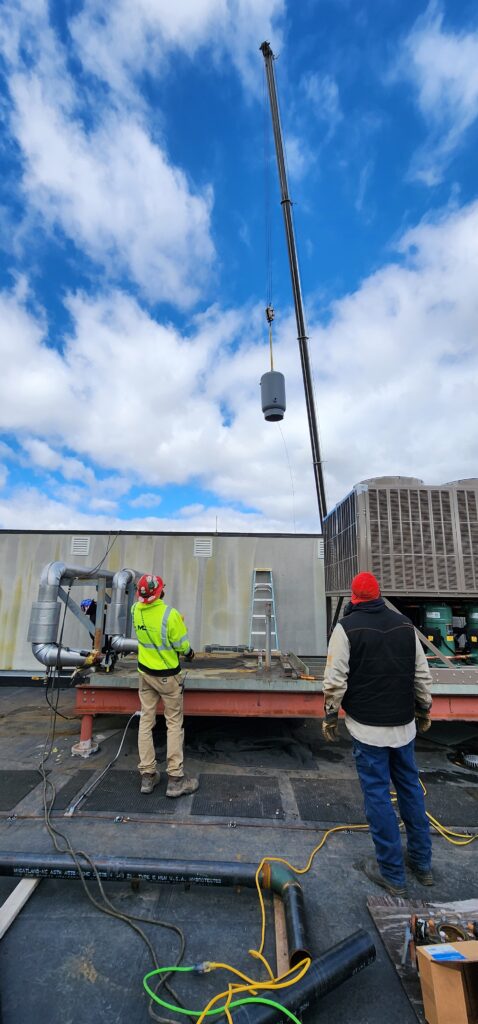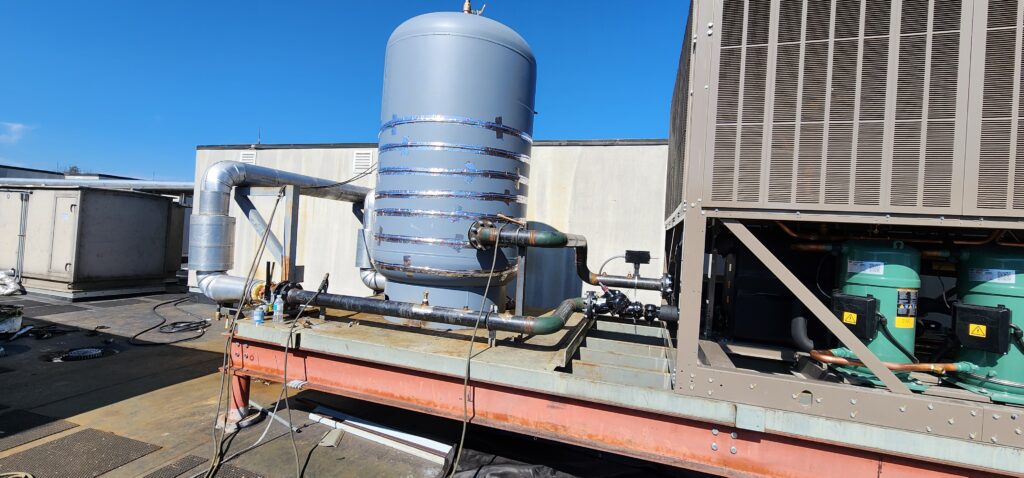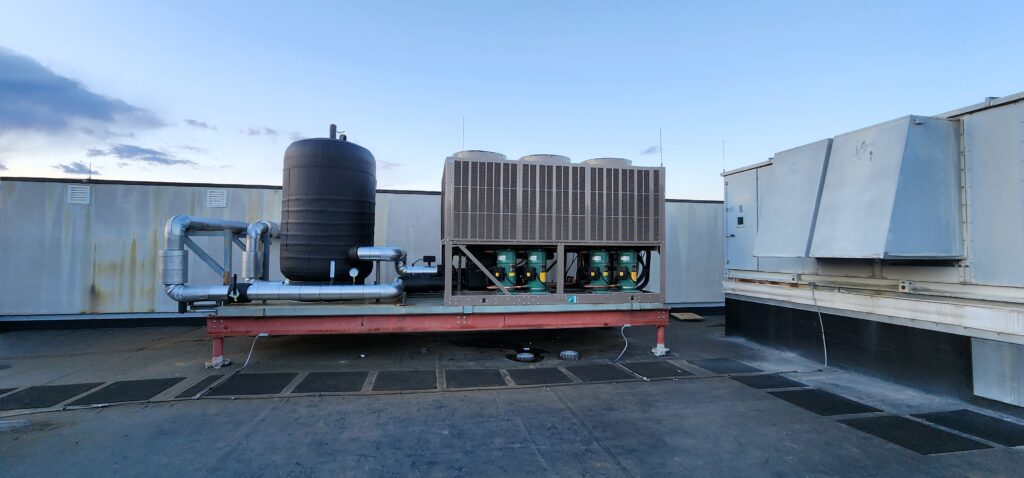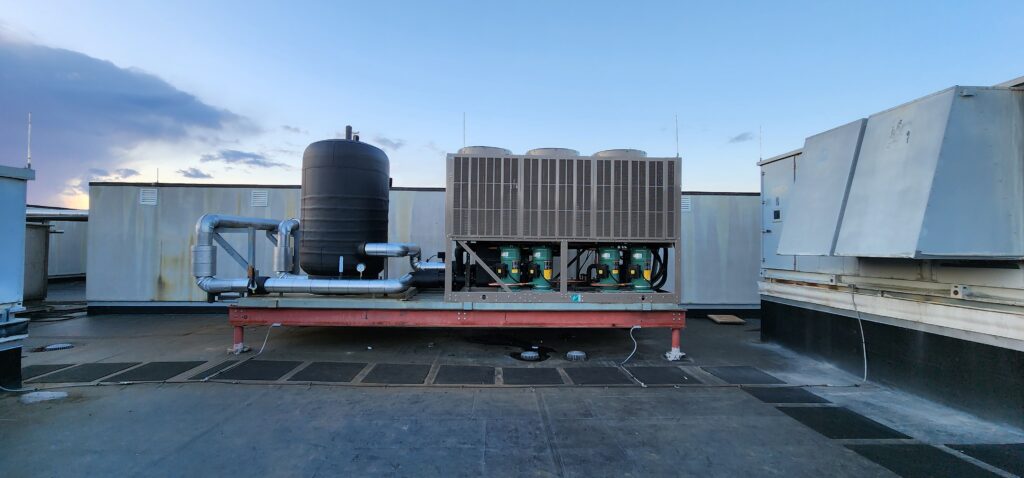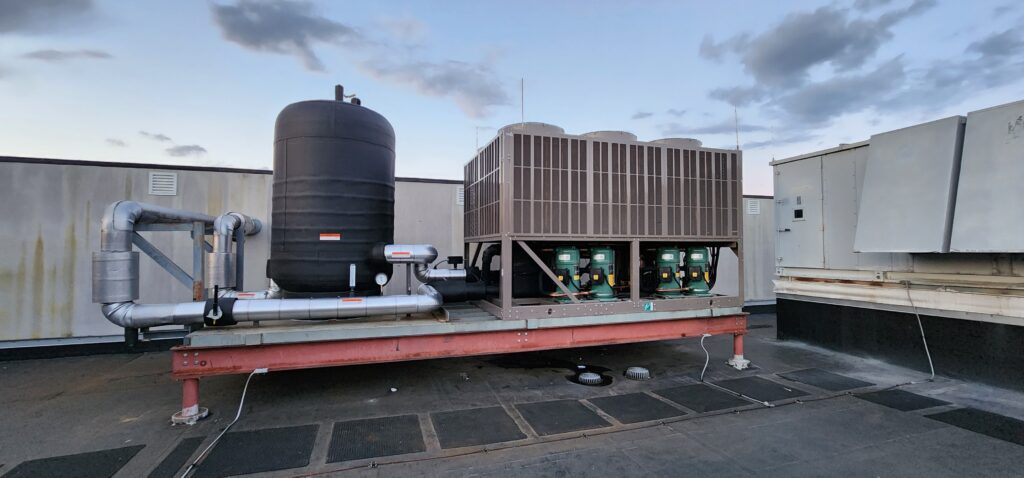This project at the James H. Quillen VA Medical Center in Mountain Home, TN, was not without its challenges. The design-build replacement of two critical chiller units, the Operating Room Chiller and the Building 204 Catheter Lab Chiller, required thoughtful design given the available space and size for their locations. These chillers were beyond their useful lives, causing significant reliability issues and reducing the operational availability of these vital hospital areas. Given the urgency, the VA opted to bypass the traditional design-bid-build method. To expedite the project, B2 provided in-house engineering design, including the equipment layout and piping system.
The replacement of the OR Chiller included the installation of a new 150-ton air-cooled chiller, along with new pumps, controls, a structural concrete pad, fencing, mechanical insulation, and a heat trace system. These additions ensure a fully functional system complying with the current VA TIL Master Specifications and Standards, providing reassurance of the project’s quality. For Building 204, the project involved replacing the existing chiller with a new 120-ton air-cooled chiller and replacing the existing buffer tank with a new 850-gallon tank. It, too, received new heat tracing.
B2 mobilized based on just-in-time chiller delivery, beginning with pouring new structural concrete pads after the underground electrical work was roughed in. Following the concrete work, B2 set the pumps and laid out the piping. The piping systems, controls, heat trace, and mechanical insulation were completed upon the chillers’ arrival. The new controls and the OR Chiller flow meter were integrated into the existing Engineering Control Center and the Building Management Systems, complete with graphics and training capabilities. The project was completed in April 2024 and provided the reliable N+1 redundancy the VA protocols mandate, especially in critical hospital spaces like these two.
